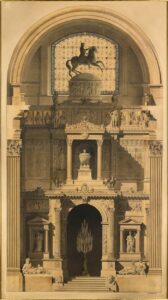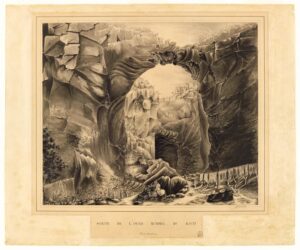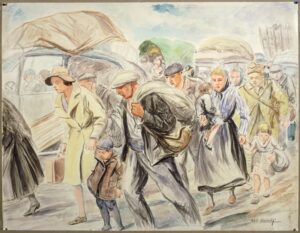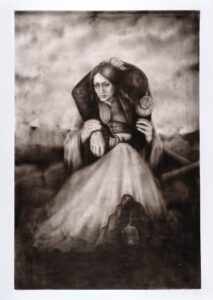Renowned for its weapons, ancient armour and uniforms, the Musée de l'Armée houses a little-known collection of drawings, estimated today at 10,000 works. The selection on display, ranging from the 16th to the 21st century, has invited visitors to discover the diversity of this collection and allows them to observe the vast thematic field that the military world can offer, without forgetting the site in which this collection is housed today, the Hôtel des Invalides.
This exhibition also highlighted, through its recent acquisitions, the current and future areas of enrichment, with a view to supporting the extension and transformation project of the Musée de l'Armée called MINERVE (2022-2030) and the creation of four new permanent exhibitions: "L'hôtel des Invalides, entre histoire et mémoires" (The Hôtel des Invalides, between history and memory), "Armed Forces and France's Military Commitments" (Armed Forces and France's Military Commitments), "Post-1945: From the Cold War to the Present" (After 1945, from the Cold War to the present day), and "Colonisation, Decolonisation: A Shared History".

Mai Van Nam, La Partisane, 1966. Inv. 2019.64.3, H. 38,7 ; L. 54,3 cm
The main themes of the exhibition:
1 - Under the Ancien Régime: the military state
The Ancien Régime was a key period in the formation of the French army. The first drawings in the collection are linked to models intended for arms manufacturers. Portraits of military figures, weapons, and scenes of daily life during the military campaigns of Louis XIV and his successors are presented.
Anonyme, Cuirasse, 16e siècle
Inv. 22643/1 ; Fd 824 -
H. 25,7 ; L. 27 cm
2 - Drawing the legend: the Napoleonic period
The collection of drawings illustrates both the imperial symbolism and the military aspects under the Empire, particularly through the vision of the geographers. Other great representatives of the Napoleonic epic are also represented and contribute through their works to forging an iconography relating to Napoleon. Napoleon's presence at the Invalides has also been very strong since the Return of the Ashes and the construction of the tomb under the Dome, which considerably modified the place and inspired many artists.
Philippe Cannissié, Projet pour le tombeau de l'Empereur, 1841.
Inv. 22021 ; Fd 816
H. 24,3 ; L. 39,9 cm
3 - The 19th century, the time of military painters
The 19th century was marked by colonial expansion; distant conflicts were also an opportunity to discover new landscapes and populations. Official artists, amateurs and soldiers all contributed to the iconography of conflicts. Soldiers wielding pencils brought a more personal vision of their experience in the field. This period was also the golden age of military painters.
Warnier Eugène Alphonse, Sortie de l'Oued Rummel, vue du ravin, 1844.
Inv. 9306 ; Ed 128/6
H. 31 ; L. 40,6 cm
4 - The First World War
The First World War was a special time for the Musée de l'Armée, which organised artistic missions from the start of the war, sending artists to the combat zones. Other testimonies of mobilised artists complete this collection.
Guillaume Apollinaire, Autoportrait en cavalier masqué décapité, 1916.
Inv. 2012.4.2
H. 19 ; L. 12,5 cm
5 - The Second World War
The collections of drawings relating to the Second World War are both evidence of military action and of the impact of the conflict on the civilian population through exodus or deportation. The collection of drawings from this period also draws its originality from the presence of the war work of Jean Delpech (1916-1988), donated in part to the Musée de l'Armée in 1972, and which was acquired from the family in 2019, giving a very personal vision of the conflict.
Abel Renault, L’Exode, 1940.
Inv. 20586
H. 50 ; L. 65 cm
6 - The museum of tomorrow
The Musée de l'Armée's collection of drawings is constantly being enriched by strengthening the reference collections and opening up to new approaches and periods. The current and future enrichment projects aim to support the MINERVE extension and modernisation project, scheduled for 2022 to 2030.
Célia Muller, Delphine 2, 2021
Inv. 2022.23.1
H. 1 m ; L. 65 cm
Getty Paper Project
The Musée de l'Armée is one of the 2022 winners of the Getty Foundation's Paper Project (Los Angeles). Thanks to this prize, the Museum is working to promote the wartime work of Jean Delpech, thus concretising a history shared for nearly 50 years with the artist's family. The Museum will receive an endowment of €90,000 which will enable it to create a digital space dedicated to the Jean Delpech collection and to publish a catalogue raisonné of his works kept at the Musée de l'Armée.
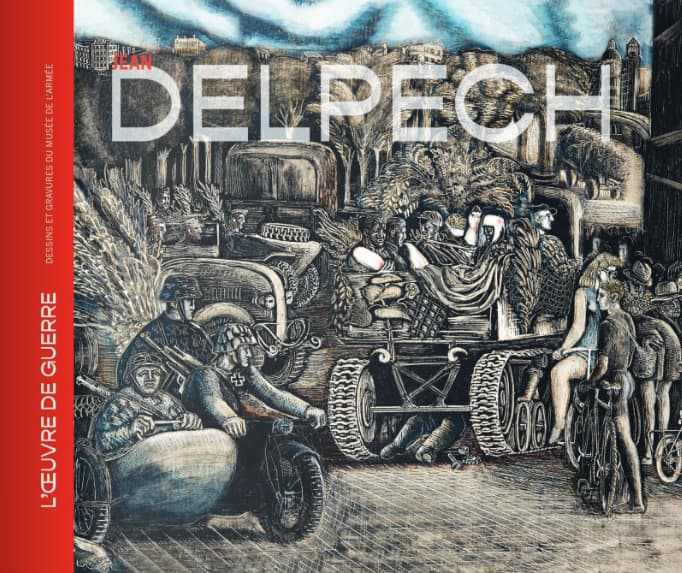
Jean Delpech, l'œuvre de Guerre. Dessins et gravures du musée de l'Armée*, edited by Hélène Boudou-Reuzé and Laëtitia Desserrières, Paris, In Fine éditions d'art / musée de l'Armée, 2022. 384 pages, 328 illustrations, 49 €.
Creation of an IT tool
Thanks to the support of the Getty Foundation, the Musée de l'Armée is developing an online digital space that will offer an exhaustive catalogue of the prints and drawings it holds by the artist. Each piece will be accompanied by a technical note and elements explaining the artist's creative process: the engraving techniques used by Jean Delpech will be detailed in order to better understand the production of his "reworked monotypes", halfway between engravings and drawings. The aim is to create a participatory space where anyone with additional information on the works, their subject or the artist can contribute.



